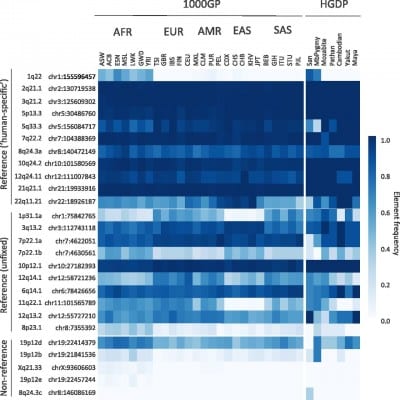Evolution has a way of reminding us that we were once very strong, or very weak, depending on the circumstances. Our DNA is like the rings on a tree, with a basic structure built upon by eons of change that manifest itself as a fork in the evolutionary branch that produces a certain trait that may be particularly useful. An interesting twist to these ‘rings’ on our DNA is when foreign DNA is incorporated into our own, especially from viruses. These are called HERVs, or Human Endogenous Retroviruses.
One study that was just published in February in the Proceedings of the National Academy of Sciences found nineteen non-human DNA virus DNA sequences in our own genes, possibly when they infected our ancestors many thousands of years ago. One of them is a complete virus DNA structure copy in its entirety. The study looked at over 2500 DNA samples from people all over the world, a large number of them from Africa, the ancestors of modern man. This is in addition to 17 other sequences found over the last few years by various other studies.

So HERVs is the name given to the ancient viruses that once infected our ancestors and inserted themselves into our DNA. One of these ‘retroviruses’ includes the HIV virus, which causes AIDS. During infection, a DNA copy of the viral RNA genome is permanently integrated into the nuclear DNA of the body’s cell as a provirus. The body’s own DNA replicating system keeps making copies of the retrovirus DNA and thinks it part of the human genome. Some HERV sequences have actually allowed humans to evolve useful traits, like the cell layer around the fetus that protects it from toxins in the mother’s blood.
The new HERVs could be capable of being infectious, which would allow further studies into large scale epidemics that wiped out large numbers of people, historically. It would also give insight into the methods of how the virus got incorporated into human DNA. Unfortunately, not all HERVs have been found yet since a very large sampling of people and their DNA is needed to be able to find all the HERVs.
[button link=”http://www.pnas.org/content/early/2016/03/16/1602336113″ icon=”fa-external-link” side=”left” target=”blank” color=”285b5e” textcolor=”ffffff”]Source: PNAS [/button]









